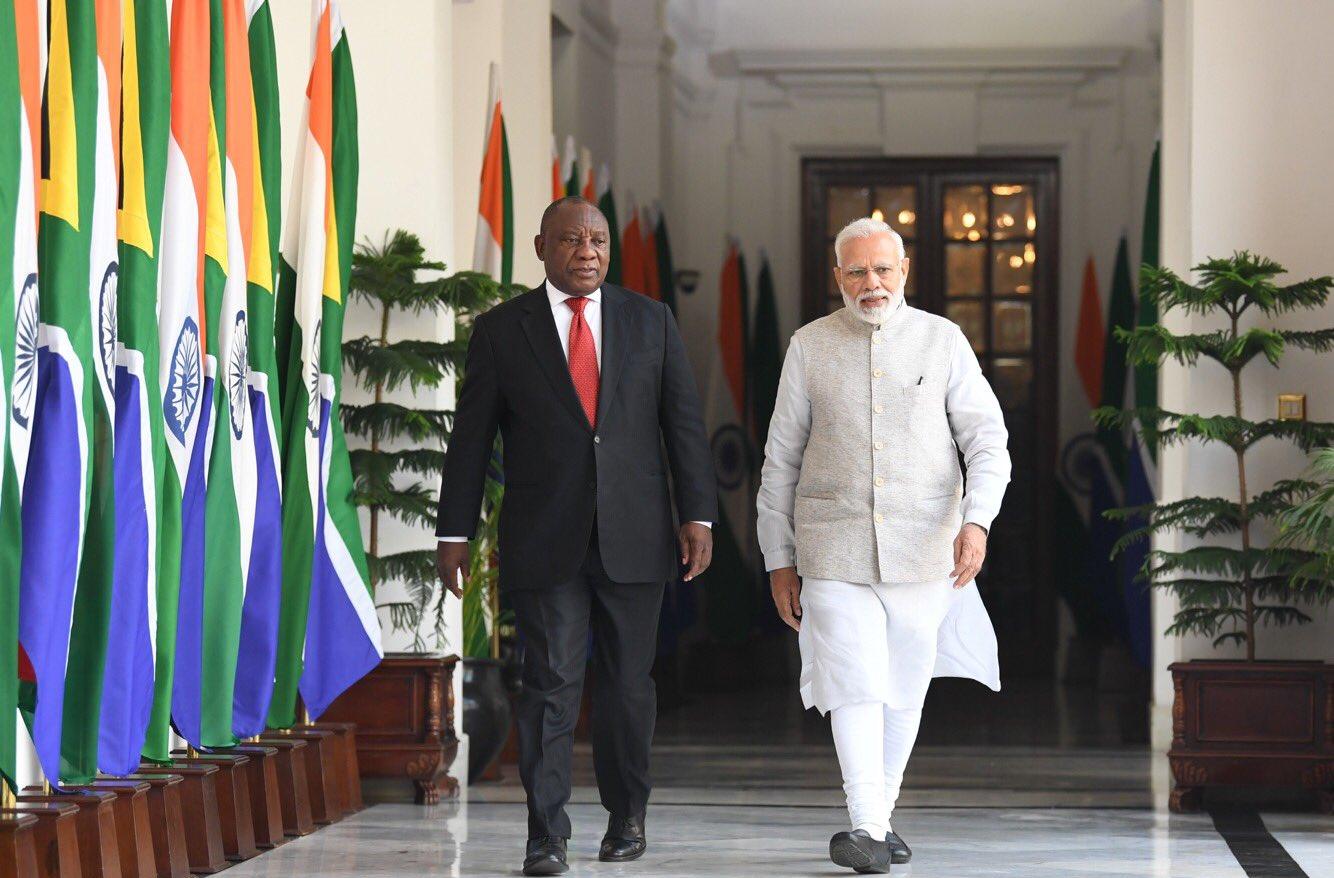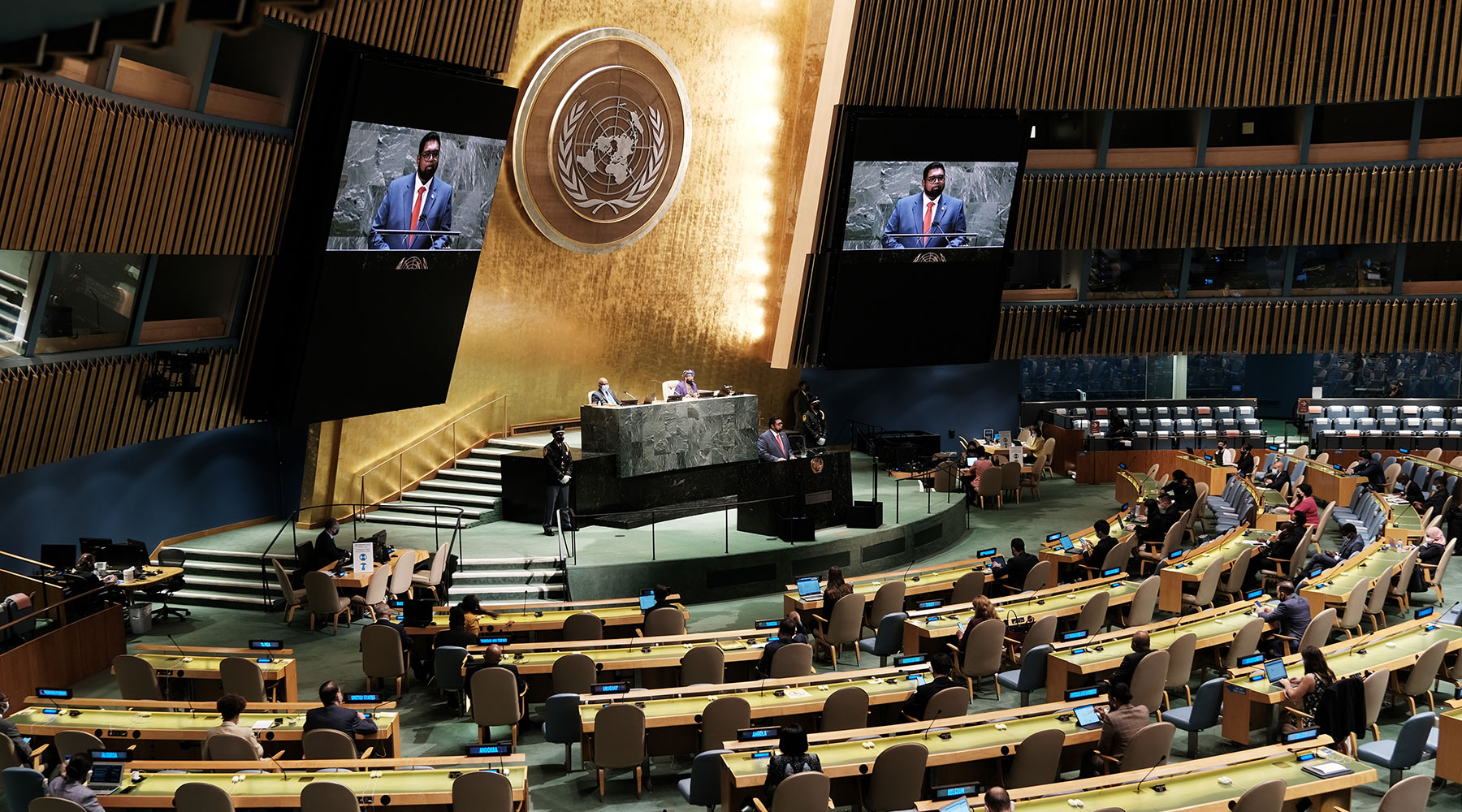Today, amid a deepening mutual cooperation and a high interest in the organization shown by different states from almost all parts of the world, BRICS is facing a dilemma of choosing a further expansion path and a direction for its development. On the one hand, a large number of candidates for accession augurs well for its successful development in the future. On the other hand, it becomes critically important to construct a common vision of the goals and mechanisms for an expansion of BRICS, including the parameters and criteria for the selection of new members. Reliance on three major pillars seems viable: 1) geographic as well as religious and linguistic representation; 2) economic potential, including the size and growth rates of the economy and the population numbers; 3) political and ideological affiliation, enabling to consider the preferred development direction for this or that candidate. Thus, while BRICS does not currently imply a formulation of a collective view on the entire range of contemporary challenges, rather focusing on the joint achievement of economic goals and the development of common approaches to understanding global trends and problems, the prospects for its enlargement and the accompanying reform of the forum re-emphasize the imperative of possible transformations within BRICS.
Surely, the original principle underlying the association does not suggest that BRICS may evolve into a full-fledged international union with clear commitments to act with respect to third countries under certain circumstances. But it would also be a mistake to treat BRICS as a coalition or an association pursuing short-term goals not distinguished by a higher longevity. In this regard, the expansion of BRICS into Africa is more likely to preserve this forum as a “soft” political and economic platform. This outcome will make it possible to maintain both the current level of commitments by its member states and to retain attractiveness for other states in a difficult international environment.
In recent months, at least six African states have declared their desire to join BRICS. Algeria, Egypt, Nigeria, Senegal and Sudan (before commencement of the civil conflict) explicitly indicated this, while Ethiopia was the last to declare its intention in late June 2023. In total, the number of candidates for accession has reached 20.
It is quite natural that the process of “enlarging BRICS” will not be able to satisfy all the aspirants or even most of the 20 potential candidates. The forum faces the dilemma of how to organize the process while not alienating those countries that will not be included for the time being. Much of this depends on the future goals of BRICS and the principles of enlargement that are currently under consideration.
BRICS is neither a military alliance, nor a trading bloc
An analysis of BRICS cannot dispense with mentioning that the forum consists of the world’s largest economies. In 2021, the BRICS nations accounted for a quarter of global GDP—and this share is trending upward. Besides, the importance of Brazil, Russia, India, China and South Africa is even greater in certain sectors, such as agriculture, rare earth metals or rocket science. Yet, the main task of BRICS, according to the Economic Partnership Strategy 2025, is not leadership in terms of the global market share but the “strengthening of interconnectivity,” that is, increasing mutual ties in all sectors, from economic cooperarion to humanitarian contacts.
In other words, the forum is constantly turning inward to its own needs and development priorities. This is the key difference between the BRICS and any military alliance: it is not threats that inform the behavior of the participating states, pushing them to join hands, but common goals. [1] Countries get united not against any power and not for ideological reasons but primarily for long-term and mutual benefit. To date, the BRICS format has been above the fray of the major great powers, assuming that its participants will develop and technologically improve while other powerhouses keep sorting things out in their quest for a “rules-based order” in the mazes of global affairs. Yet, the BRICS nations are certainly aware that the accumulated potential for cooperation may eventually be applied to threats as well.
In particular, the Beijing BRICS Declaration (2022) details the concerns of the participating states, mentioning the situation in Ukraine, the national dialogue in Afghanistan, and the denuclearization of the Korean peninsula, much as arms race in outer space, nonproliferation of chemical and bacteriological weapons, drug trafficking, and use of information and communication technologies for criminal purposes. Given that many of these problems can be classified as intractable, it is likely that their destabilizing effect will prove impossible to contain in the medium term. And this will require a turnaround of the BRICS potential for a stern response to emerging threats.
At the same time, the mutual benefits of cooperation between Brazil, Russia, India, China and South Africa are clearly sectoral in nature. “Strengthening interconnectivity” does not entail fencing off the rest of the world or abandoning profitable trade and investment projects with third parties. Specifically, for China, trade with the BRICS nations accounts for only 7.2% of its trade turnover, for India it is 19%, for Russia – 13.5%, for South Africa about 20% and for Brazil 24%. Trade flows between Russia, China, India and Brazil patently increased in 2022. For Brazil, the growth was due to Russia’s fertilizer exports; for India – to new Russian energy export schemes; and for China – to an increase in industrial cooperation and commodity exports. [2] However, sectoral cooperation within the BRICS does not lead to intersectoral “spillover” or to the easing of all tariff and non-tariff barriers.
In other words, the economic interaction of the five nations is not aimed at pure economic benefits, but rather at benefits bound to the predictability of mutual relations as well as global political and economic processes. The focus of BRICS on long-term priorities and the rundown of contingencies distinguishes this format from classic free trade zones and regional integration groupings. Therefore, the enlargement process should take these realities into account.
Possible enlargement principles
The inclusion of African nations in BRICS makes sense, above all, in terms of the principle of geographic representation. Following the current logic, Brazil represents South America, South Africa represents Africa, India represents South Asia, China represents the Asia-Pacific, and Russia represents Eurasia. The Asian skew (with three BRICS member states partly or fully located in Asia) can be eliminated by adding African countries. However, to ensure a “fuller” representation, one should take into account related factors such as religious and linguistic affiliation, as well as the logistical position of potential members. From this perspective, it seems necessary to increase the presence of Muslim as well as Francophone and/or Arabic-speaking countries in BRICS.
The point is that in the absence of countries professing the world’s second largest religion, and of the nations that officially use some of the most widely spoken languages, the organization can hardly claim to be truly geographically, religiously and linguistically representative. Thus, it would be rather reasonable to admit Senegal or Egypt, which are centers of Islam on the African continent and, what’s more, they use French and/or Arabic as their official languages. Furthermore, these two states are well positioned and can be effectively included in the logistical network as sea gates to the west and north of Africa, respectively.
Another possible factor for a BRICS expansion could be the size of the economy and the associated “demographic dividend.” [3] Many African nations are already showing high growth rates. This trend will be heading up as their population grows and, consequently, as the number of consumers and the capacity of the domestic market build up. From these perspectives, Nigeria and Egypt, the leaders among African nations in terms of GDP, also demonstrating relatively high economic growth rates, are clear standouts. In the meantime, given the demographic indicators, Ethiopia, the second most populous nation on the continent, whose economic growth rates suffered in recent years due to internal political instability, can also be included in the list of the most promising BRICS member states from the African continent.
Table 1: African claimants to joining the BRICS: the size of economies and population numbers
|
|
Algeria
|
Egypt
|
Nigeria
|
Senegal
|
Sudan
|
Ethiopia
|
|
GDP (USD million)
|
165,548
|
405,911
|
459,031
|
27,511
|
25,976
|
96,280
|
|
GDP growth (% per annum)
|
+4.4
|
+4.1
|
+2.95
|
+6
|
+0.1
|
+3.2
|
|
Population (million)
|
44.18
|
109.26
|
213.4
|
16.88
|
45.66
|
120.28
|
Source: compiled by the authors on the basis of UNCTAD data for 2021. UNCTADstat: country profile. URL: https://unctadstat.unctad.org/CountryProfile/en-GB/index.html (date of application: 04 July 2023)
Finally, the criterion for candidates to be part of a BRICS enlargement could be a member’s potential for changing or preserving the format per se. At present, Russia and China support expanding the sphere of BRICS responsibility in one form or another as well as the forum’s more active inclusion in global governance processes. Adding a nation with a similar foreign policy stance could help transform the five current members into a more traditional international coalition or a formalized political alliance. On the contrary, the accession of a state that is more likely to support a line of detachment from the confrontational centers of power will contribute to the freezing of BRICS’ current institutional structure.
Among the six aspirant countries under review, the most politicized approach is the anti-colonial rhetoric characteristic of the Algerian government. Algeria, which has maintained close contacts with Russia for many years, including through the military-industrial complex, is undoubtedly interested not only in the economic prospects that will open up in case of its accession to BRICS, but also in fostering a common position on a number of issues on the global political agenda. With that in mind, Algeria’s non-involvement in global and regional conflicts, except for the “traditional” confrontation with Morocco, would allow BRICS to avoid being dragging into solving acute military and political problems and, as a consequence, to preclude the possible polarization of the bloc. For their part, both Egypt and Ethiopia, which proceed from the principles of political and economic developmentalism, as well as more “pro-Western” Nigeria and Senegal, hardly share the Russian and Chinese approach to the forum’s outlook. Given the acute crisis and the lack of any vision for future development at the moment, Sudan cannot be regarded as a force capable of participating in the directional transformation of BRICS.
Implications
Today, amid a deepening mutual cooperation and a high interest in the organization shown by different states from almost all parts of the world, BRICS is facing a dilemma of choosing a further expansion path and a direction for its development. On the one hand, a large number of candidates for accession augurs well for its successful development in the future. On the other hand, it becomes critically important to construct a common vision of the goals and mechanisms for an expansion of BRICS, including the parameters and criteria for the selection of new members. Reliance on three major pillars seems viable: 1) geographic as well as religious and linguistic representation; 2) economic potential, including the size and growth rates of the economy and the population numbers; 3) political and ideological affiliation, enabling to consider the preferred development direction for this or that candidate. Thus, while BRICS does not currently imply a formulation of a collective view on the entire range of contemporary challenges, rather focusing on the joint achievement of economic goals and the development of common approaches to understanding global trends and problems, the prospects for its enlargement and the accompanying reform of the forum re-emphasize the imperative of possible transformations within BRICS.
Surely, the original principle underlying the association does not suggest that BRICS may evolve into a full-fledged international union with clear commitments to act with respect to third countries under certain circumstances. But it would also be a mistake to treat BRICS as a coalition or an association pursuing short-term goals not distinguished by a higher longevity. In this regard, the expansion of BRICS into Africa is more likely to preserve this forum as a “soft” political and economic platform. This outcome will make it possible to maintain both the current level of commitments by its member states and to retain attractiveness for other states in a difficult international environment.
1. Wilkins T. S. ‘Alignment’, not ‘alliance’–the shifting paradigm of international security cooperation: toward a conceptual taxonomy of alignment // Review of International Studies. 2012. Vol. 38. №. 1. pp. 53-76.
2. Kovaleva Е. I. at al. Evaluating Russia’s Trade with BRICS Nations //Индустриальная экономика Industrial Economy. – 2023. – No. 2. – p. 14-19.
3. Abramova I. O. Demographic Dividend and the Future of Africa //Asia and Africa Today. – 2014. – №. 11. – p. 23-30.







